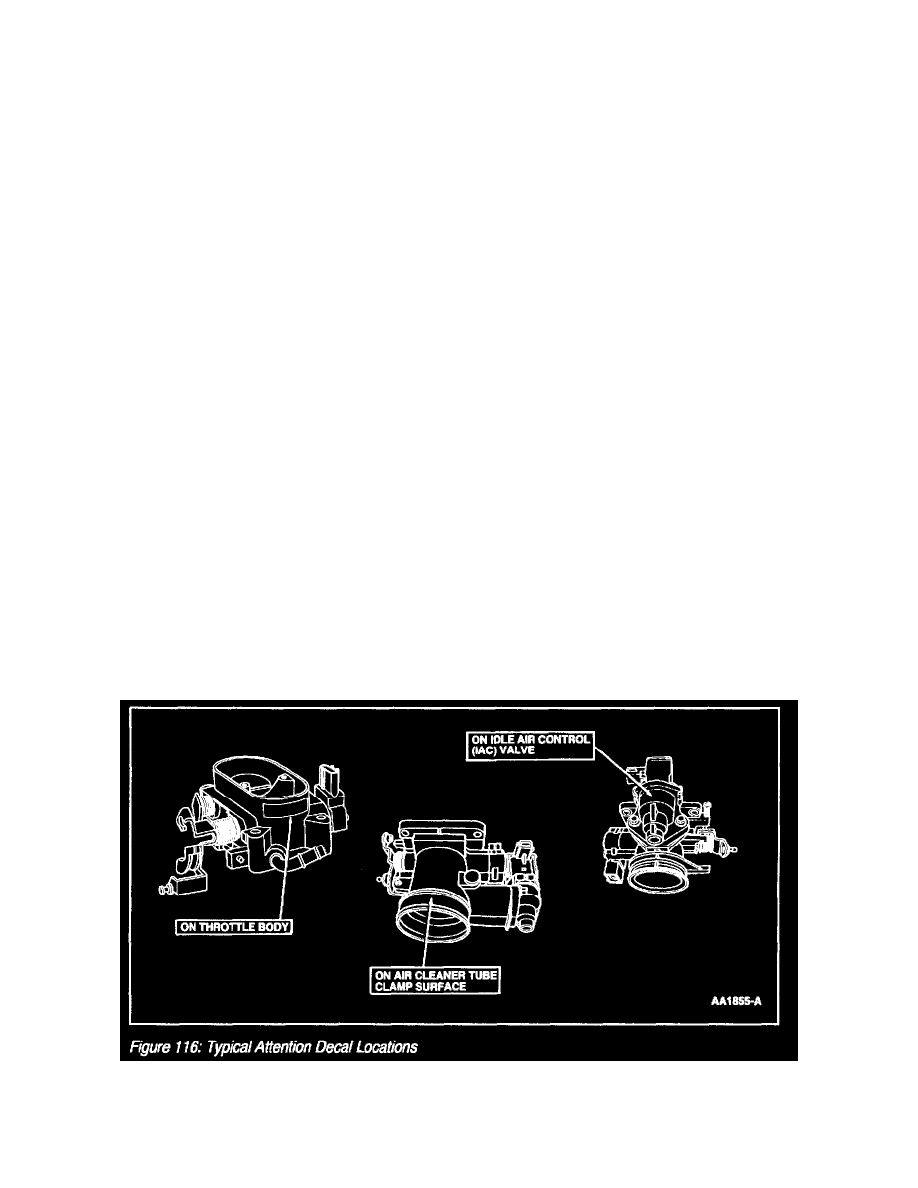Focus ZX5 L4-2.0L DOHC VIN 3 (2002)

Throttle Body: Description and Operation
Throttle Body System Overview
The throttle body system meters air to the engine during idle, part throttle, and Wide Open Throttle (WOT) conditions. The throttle body system
consists of an Idle Air Control (IAC) valve assembly, idle air orifice, single or dual bores with butterfly valve throttle plates and a Throttle
Position (TP) sensor. One other source of idle air flow is the Positive Crankcase Ventilation (PCV) system. The combined idle air flow (from idle
air orifice IAC flow and PCV flow) is measured by the MAF sensor on all applications.
During idle, the throttle body assembly provides a set amount of air flow to the engine through the idle air passage and PCV valve. The IAC valve
assembly provides additional air when commanded by the powertrain control module (PCM) to maintain the proper engine idle speed under
varying conditions. The IAC valve assembly mounts directly to the throttle body assembly in most applications, but is remote-mounted to the
intake manifold in some applications. Idle speed is controlled by the PCM and cannot be adjusted.
NOTE: The traditional idle air adjust procedure as well as throttle return screw are no longer used on On-Board Diagnostic (OBD) II
applications.
Throttle rotation is controlled by a cam/cable linkage to slow the initial opening rate of the throttle plate. The TP sensor monitors throttle position
and provides an electrical signal to the PCM. Some throttle body applications provide an air supply channel upstream of the throttle plate to
provide fresh air to the Positive Crankcase Ventilation (PCV) or AC Systems. Other throttle body applications provide individual vacuum taps
downstream of the throttle plate for PCV return, Exhaust Gas Recirculation (EGR), Evaporative Emission (EVAP), and miscellaneous control
signals.
Throttle Body System Hardware
The major components of the throttle body assembly include the TP sensor, IAC valve assembly, and throttle body housing assembly.
Throttle Body Housing
The throttle body housing assembly is a single piece of aluminum casting with an air passage and a butterfly throttle plate with linkage
mechanisms. When the throttle plate is in the idle (or closed) position, the throttle lever arm should be in contact with the Throttle Return Stop.
The throttle return stop prevents the throttle plate from contacting the bore and sticking closed. The setting also establishes the amount of air flow
between the throttle plate and bore. To minimize the closed plate air flow, a special coating is applied to the throttle plate and bore to help seal this
area. This sealant/coating also makes the throttle body resistant to engine intake sludge accumulation.
Features of the Throttle Body Assembly include:
1. Idle air control (IAC) valve assembly mounted directly to the throttle body assembly (some vehicles).
2. A pre-set stop to locate the WOT position.
3. An air supply channel upstream of the throttle plate to provide fresh air to the PCV system (some vehicles only).
4. Individual vacuum taps for PCV, EGR, EVAP and miscellaneous control signals (some vehicles only).
5. PCV air return (if applicable).
6. A throttle body-mounted throttle position (TP) sensor.
Typical Attention Decal Locations
7. A sealant/coating on the throttle bore and throttle plate makes the throttle body air flow tolerant to engine intake sludge accumulation. These
throttle body assemblies MUST NOT BE CLEANED and have a white/black attention decal (Figure 116) advising not to clean.
